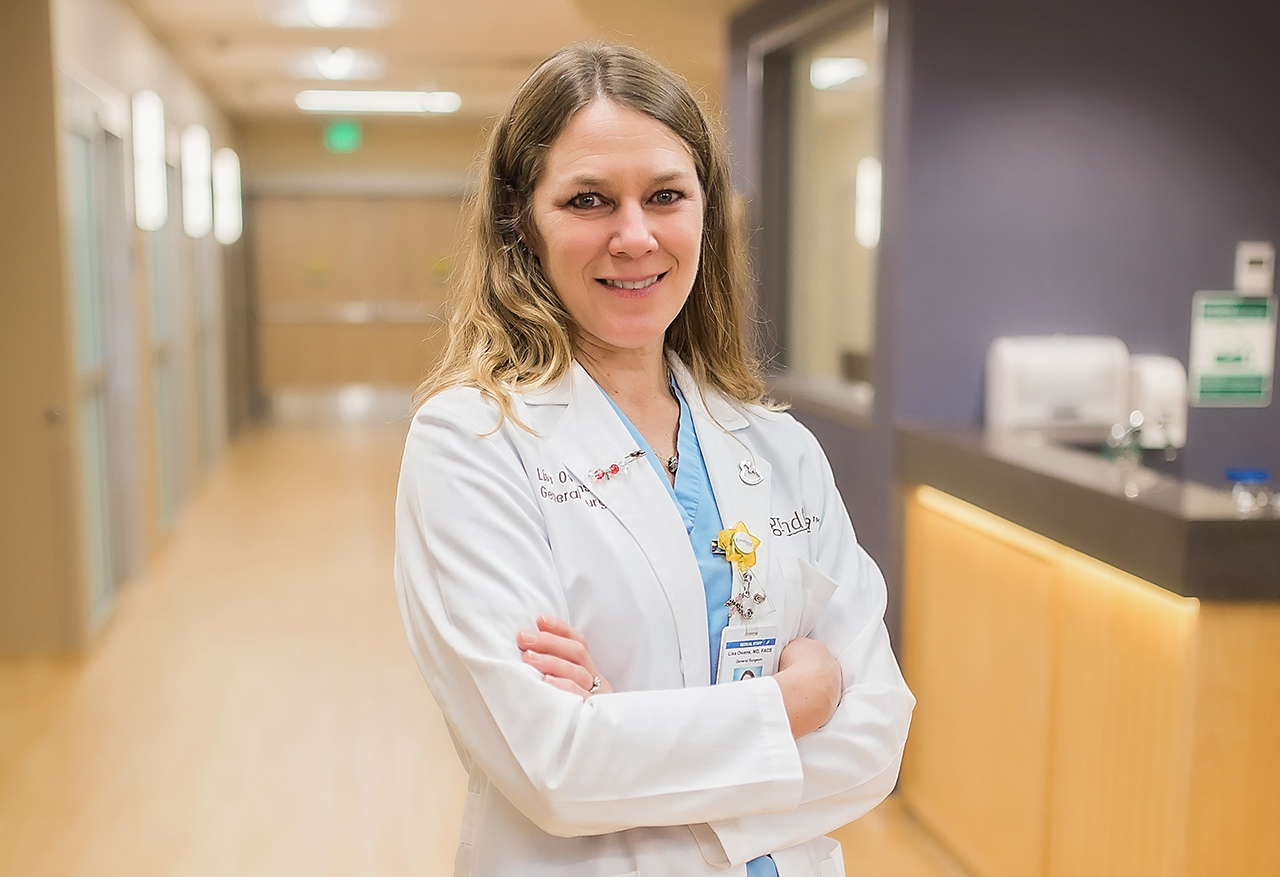
Health and Wellness, Latest News
Breast Health
Learn more about breast health, cancer screenings and 3D mammograms from Dr. Lisa Owens, a general surgeon focused on breast cancer and breast surgery at Grand Itasca.
- March 08, 2021
- By Staff Writer
Did you know that every single woman is at risk for breast cancer, and even some men are at risk for breast cancer? Here are a few things that might surprise you about this disease:
-
Over their lifetimes, one in eight women will have breast cancer.
-
Some women who have breast cancer have a genetic predisposition to it, but most women who have breast cancer don't.
-
Three out of four women with breast cancer don't have any family history.
-
Women are more likely to get breast cancer than men.
It’s worth noting that breast cancer risks increase with things you can control, as well as things that are outside of your control. One of the things a person can't control is their hormone status. A person can control whether he or she chooses to take extra hormones, but everyone’s body makes its own hormone mix and we can't control that.
Be Proactive
Dr. Lisa Owens is a general surgeon focused on breast cancer and breast surgery at Grand Itasca. She says it's important for women to pay attention to their breasts. “If you notice something different with your breasts, bring it to your doctor’s attention,” she advises, noting that it's very important to start screening for breast cancer. “We want to make sure you get an exam once a year or every other year as part of your routine health maintenance.”
Other rules to live by: Don't smoke, maintain a healthy weight, get lots of exercise, and eat healthy foods. Those things are important for your overall health as well as your breast health. Research shows that if you exercise 30 minutes a day, it decreases your risk for breast cancer along with a lot of other cancers.
Signs to Watch For
Things that can signal a problem with your breasts include:
-
A new lump or a bump
-
Skin changes such as redness or soreness
-
Nipple changes like nipple discharge, or a shape change in your nipple
-
A shape change in your breast
Those can be indicators that something's going on—not necessarily breast cancer, but something that a provider should look at. Most breast cancer doesn't cause pain, so don’t be alarmed if you experience breast pain. Still, get it checked out.
Like many doctors, Dr. Owens recommends that women start screening mammograms at age 40, and continue to get them every year after that. She shares, “There's been some recent research showing that women who start mammograms at age 40 and have them every year have less chance of dying over the next 10 years from breast cancer than women who don't start mammograms until age 50.”
It's important to know that you do not need to have a doctor's order or your doctor's permission to get a breast screening mammogram. You can just call the hospital, ask for the mammogram department, let them know that you want a screening mammogram, and they will take care of everything for you.
3D Mammograms
Most women benefit from a 3D mammogram and most insurance plans will pay for it. The 3D mammogram helps providers see things in breast tissue that is more dense by nature. “It helps us find breast cancers and pre-cancers at a smaller stage,” says Dr. Owens, “and it also helps us know when something isn't a breast cancer.”
An exam involving a 3D mammogram provides a better view of the breast and allows the doctor to determine if a biopsy is needed—thus decreasing your chance of having a biopsy that shows nothing. Most women who have an abnormal mammogram will talk with somebody who can help them understand why they want to get a better look at that tissue.
“If you get an abnormal mammogram we'll have you come back and get some further studies,” Dr. Owens explains. “Sometimes it's another mammogram, sometimes it's an ultrasound. Those things help us look at the tissue more closely to see if it's really something to be worried about or if it's not a big deal.”
Thanks to new mammography technology, Grand Itasca is now able to do 3D Stereotactic Tomosynthesis Biopsies. This means that, should you ever need a biopsy, it will be more efficient, quick and comfortable.
After a Biopsy
Every patient who has a biopsy gets an appointment with a surgeon to discuss the results. This is because, number one, the surgeon wants to make sure that the biopsy site doesn't have any infection or any excessive bruising or anything that causes a concern. Number two, the surgeon wants to make sure that the patient understands the findings of the biopsies, as well as any next steps. Many times, there's nothing that needs to be done except a follow-up mammogram in six months. Other times, patients will need to have a surgery for further evaluation or treatment of whatever that breast finding was.
Dr. Owens understands that many women worry if they've had a biopsy, or if they have a lump or a spot on their breast. It might cause excessive anxiety to the point that they can't sleep, or they find themselves frequently checking to see if they can feel that spot, even though it's tiny. “In those cases, sometimes we just take that lump out even though we've had a biopsy that shows it's benign,” she explains. “If it's causing distress, we can take it out. Once it's in a jar headed down to the lab, we know it's never going to bother them again.”